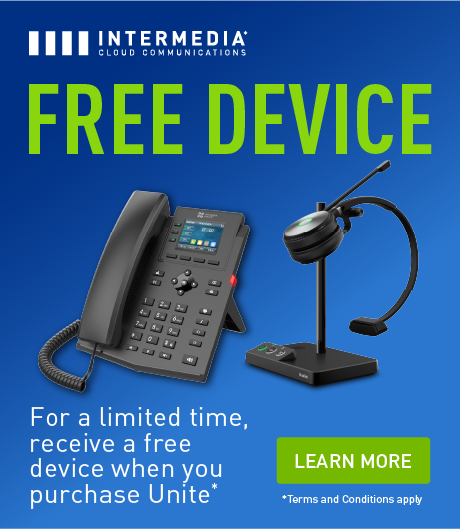Hybrid work is the new standard. As organizations adapt, they’re reassessing their business communication tools to ensure seamless collaboration, no matter where employees are located. A feature-rich video conferencing platform is essential for productivity, engagement, and efficient teamwork.
To make virtual meetings more effective, businesses need more than just basic video calls. The right video conferencing features can help teams stay connected, improve collaboration, and eliminate common frustrations like poor audio quality, disengagement, and security concerns.
Let’s explore the most important video conferencing features that enable hybrid teams to work smarter and communicate more effectively.
Quick Takeaways
- Businesses need more than basic video calls; advanced features like AI-powered transcriptions, breakout rooms, and whiteboarding enhance productivity and engagement.
- Strong encryption, multi-factor authentication, and real-time captions ensure meetings remain secure and inclusive for all participants.
- Video conferencing platforms that connect with CRM, project management, and cloud storage tools streamline workflows and improve team coordination.
- Smart meeting summaries, automated action item tracking, and noise suppression reduce manual tasks, making virtual collaboration more efficient and focused.
Why Hybrid Teams Need Software that Elevates the Meeting Experience
While some platforms quickly became the go-to solution for virtual meetings during the pandemic, many companies are now reevaluating their long-term needs. Employees expect more than basic video calls—they need secure, engaging, and feature-rich collaboration tools that enhance productivity rather than contribute to meeting fatigue.
The shift toward hybrid and remote work remains strong. According to recent workplace studies, in-person meetings continue to decline, with many organizations fully embracing virtual collaboration as a standard practice. However, outdated or limited video conferencing solutions can lead to issues such as disengagement, security vulnerabilities, and inefficient workflows.

Organizations are now investing in video conferencing platforms that go beyond just hosting meetings. Businesses are prioritizing advanced security, AI-powered automation, and seamless integrations to create a more dynamic and productive meeting experience. With ongoing innovation in this space, the focus is on optimizing collaboration for real business value.
13 Important Video Conferencing Features
Here are the key features hybrid teams need to get the most out of their virtual business meetings.
1. High-Quality Video
Productive meetings require crystal clarity so participants feel like they’re in the room with each other, no matter how far away everyone is.
HD video conferencing creates a more realistic experience, which is important for helping co-workers develop trust among one another and encouraging a more collaborative virtual environment. It’s also a must-have for client-facing video meetings such as sales pitches and webinars – you want people to have a positive impression of your brand after every experience, whether they’re a potential customer or an employee.
2. Integrated Audio Options
Your users should be able to join by phone or computer, allowing them to participate from wherever with the same call quality. Your software should generate conference call numbers and PINs as well as custom meeting URLs to make it easy for everyone to join.
3. Active Talk Indicator
In larger meetings, it’s not always easy to figure out who’s talking. As a result, some people might be spending their energy trying to figure out who’s speaking rather than listening to what’s being said – which means they’re less likely to engage in the conversation.
But with the Active Talk Indicator, the current speaker is identified by a chat indicator. This feature is also helpful when someone’s mic is picking up background noise. Instead of wasting time trying to figure out who it is or stopping the meeting to address the noise, the individual with the background noise will know to mute themselves, or the host can mute them so the meeting can continue uninterrupted.
4. Screen Annotation and Sharing
Screen and application sharing enables more interactive meetings. Anyone should be able to share their screen, and all participants can then highlight parts of the screen or draw attention to the specific information they’re talking about.
Being able to do this in real-time lets the meeting move forward seamlessly and keeps everyone more engaged.
5. Meeting Recording
With hybrid teams, everyone’s not going to be available for every meeting. But with a feature that lets you record the full meeting and easily share it, anyone who wasn’t able to attend can watch the full meeting at another time. A recording feature is also great if anyone wants to review the meeting later to better familiarize themselves with what was said.

If your organization expects to record meetings regularly, make sure your video conferencing solution offers unlimited cloud storage.
6. Meeting Notes
Instead of expecting everyone to make personal notes during the meeting, with advanced video conferencing software, you can capture action items, next steps, and key points in real time. You can save even more time if your software automatically sends these meeting notes to all participants after the meeting.
The advantage of being able to generate shared meeting notes is that everyone will walk away with the same information – that means everyone is on the same page regarding what was decided during the meeting and what any next steps might be.
7. Group and Private Chat Features
Questions and comments will inevitably come up during meetings, so you’ll want robust chat functionality to funnel this information. With group chat, people can post questions for everyone to see and answer or share information, such as links to resources brought up during the meeting.
The private chat feature is useful when a participant needs to say something or ask a question, but doesn’t want to involve the entire group or slow down the flow of the meeting.
8. Virtual Backgrounds and Blur Effects
A cluttered or distracting background can take the focus away from your meeting. Virtual background and blur effects help create a more professional environment, ensuring that participants appear polished no matter where they’re joining from.
For businesses, this feature also allows employees to maintain brand consistency by using company-approved backgrounds. Whether working from a home office, a shared space, or a public location, virtual backgrounds help keep attention on the speaker while maintaining privacy.
Blurring the background is another useful option, subtly reducing distractions without fully replacing the setting. This is particularly helpful for meetings with clients or executives, where a clean and professional appearance matters.
9. AI-Powered Transcriptions and Live Captions
Meetings move fast, and key points can sometimes be missed. AI-powered transcriptions and live captions ensure that everyone stays engaged by providing real-time text of the conversation. This feature enhances accessibility, making meetings more inclusive for employees with hearing impairments or those in noisy environments.
Automated transcriptions are also useful for post-meeting reference. Instead of manually taking notes, participants can review a full transcript to find important discussions, decisions, or action items. Some platforms even allow for searchable transcriptions, making it easier to locate specific parts of a conversation without watching an entire recording.
Live captions help participants follow along, particularly in meetings with multiple speakers, varied accents, or technical terminology. When combined with meeting recordings, transcriptions create a valuable archive of discussions, helping teams stay aligned and accountable.
10. Smart Meeting Summaries and Action Item Tracking
Even with transcriptions and recordings, reviewing an entire meeting to extract key takeaways can be time-consuming. Smart meeting summaries use AI to automatically generate concise highlights of discussions, decisions, and next steps.
This feature reduces the need for manual note-taking and ensures that action items are documented. Some solutions even assign follow-ups to specific team members, streamlining post-meeting workflows.
By automating summaries, teams can quickly access what matters most—without sifting through hours of conversation. This is especially useful for hybrid teams, where not everyone may be able to attend every meeting in real time.
11. Breakout Rooms for Small Group Collaboration
Large meetings can sometimes hinder in-depth discussions, making it difficult for participants to engage in meaningful conversations. Breakout rooms solve this issue by allowing teams to split into smaller groups for focused collaboration before reconvening in the main session.

This feature is particularly valuable for brainstorming sessions, training programs, and project-based discussions. Team members can work through specific challenges, share ideas, and report back with actionable insights.
Hosts can control how participants are assigned to breakout rooms—whether automatically, randomly, or manually—ensuring that discussions remain productive. When used effectively, breakout rooms help create a more interactive and engaging meeting experience.
12. Whiteboarding and Visual Collaboration Tools
Some discussions require more than just words. Whiteboarding and digital collaboration tools provide a dynamic way for teams to brainstorm ideas, map out processes, and visually communicate complex concepts.
With an interactive digital whiteboard, participants can draw, add text, and place virtual sticky notes in real time. This feature is especially useful for creative teams, product development discussions, and strategy sessions that benefit from visual representation.
Additionally, some platforms allow whiteboards to be saved and shared after the meeting, ensuring that no ideas are lost. This fosters continuous collaboration and allows teams to build on previous discussions without starting from scratch.
13. Multi-Device Sync for Seamless Transitions
Employees aren’t always at their desks during meetings. Whether moving between a desktop and a mobile device or joining on a tablet, multi-device sync ensures a seamless transition without dropping from the call.
This feature allows users to switch between devices effortlessly, making it easy to stay connected on the go. For example, a participant who starts a meeting on their laptop can continue the conversation on their phone without missing key points.
Multi-device compatibility also improves flexibility for hybrid teams, ensuring that meetings remain accessible no matter where participants are located. With consistent audio and video quality across devices, team members can focus on discussions rather than technical issues.
Make Your Meetings More Effective with Feature-Rich Video Conferencing Technology
The right video conferencing features can transform virtual meetings from routine calls into productive, engaging, and secure collaboration sessions. By leveraging advanced tools like AI-powered transcriptions, breakout rooms, and real-time whiteboarding, businesses can enhance communication and efficiency for hybrid teams. Investing in a feature-rich platform ensures seamless interactions, no matter where employees are working.
Discover how a secure and reliable video conferencing solution can elevate your team’s collaboration. Contact us today to learn more or schedule a demo to experience these powerful features in action.
December 16, 2024
Explore other posts on these topics: Unified Communications




